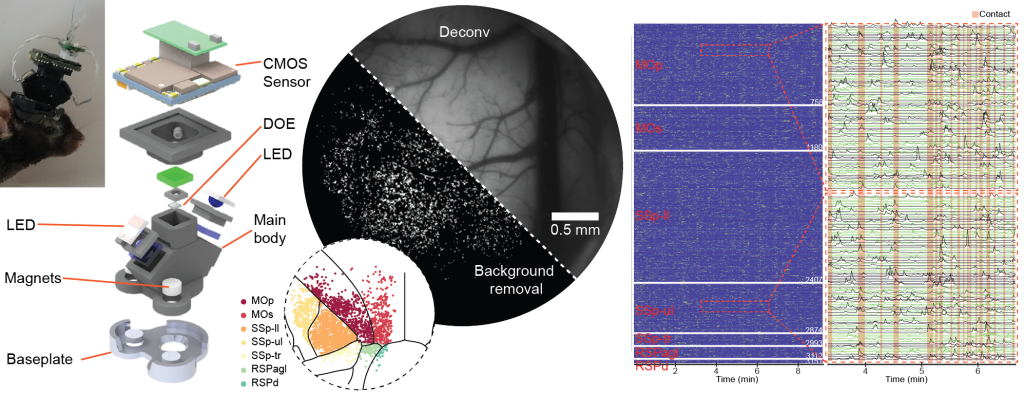
We are happy to announce that a new manuscript entitled “A Systematically Optimized Miniaturized Mesoscope (SOMM) for large-scale calcium imaging in freely moving mice” has been uploaded to the bioRxiv preprint server.
Understanding how neuronal dynamics gives rise to ethologically relevant behavior requires recording of neuronal population activity via technologies that are compatible with unconstrained animal behavior. However, realizations of cellular resolution head mounted microscopes for mice have been based on conventional microscope designs that feature various forms of ad-hoc miniaturization and weight reduction measures necessary for compatibility with the weight-limits for free animal behavior. As a result, they have typically remained limited to a small field of view (FOV) or low resolution, a shallow depth range and often remain susceptible to motion-induced artifacts.
We present a systematically optimized miniaturized mesoscope (SOMM), a widefield, head-mounted fluorescent mesoscope based on a principled optimization approach that allows for mesoscale, cellular resolution imaging of neuroactivity while offering robustness against motion-induced artifacts. This is achieved by co-optimization of a compact diffractive optical element and the associated computational algorithm under form-factor and weight constraints while maximizing the obtainable FOV, depth of field (DOF), and resolution. SOMM enables recordings of neuronal population activity at up to 16 Hz within a FOV of 3.6 × 3.6 mm2 in the cortex of freely moving mice while featuring 4-µm resolution, a DOF of 300 µm at a weight of less than 2.5 g. We show SOMM’s performance of recording large-scale neuronal population activity during social interactions, during conditioning-type experiments and by investigating neurovascular coupling using dual-color imaging.
Read our full publication here.
Congratulations to the entire team!
